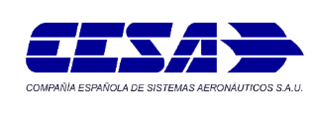
The event to present the final results of ReCam project applied to CESA use case took place at CESA on the 4th of October. CESA hosted the meeting with the collaboration of DGH (Robótica, Automatización y Mantenimiento Industrial S.A.) and TECNALIA as developers of the implemented solutions to optimize the use case of CESA according to the objectives of the RECAM project.
ReCam is a project funded by the European Commission within the Horizon 2020 program. The project has a duration of 3 years and ends on the 31st of October 2018 with the presentation of the results implemented on each of the real scenarios provided by the end users partners: CESA and Bosch. Bosch is also the coordinator of the consortium formed by companies such as the Spanish DGH, the Italian Cosberg, Enginsoft and the Austrian NXT; research centers such as TECNALIA and universities such as POLIMI (Politecnico di Milano) and TUT (Tampere University of Technology)
The main objective of the project is to develop and demonstrate a new generation of flexible production systems, leaning on reconfigurable modular production resources that allow rapid reaction to dynamic market changes, such as product variation, demand fluctuations, changes in production itself or production resource unavailability. This objective is aligned with the needs of CESA, as final user of the technology developed by ReCam in the aeronautical industry.
Assembly processes in the aeronautical sector are characterized by being very different from those of other sectors such as automotive: they are entirely manual processes, the products are complex and have a wide variability, and production rates are small and vary from one product to another. As a result, to improve productivity to create assembly spaces that are able to reconfigure optimally and quickly to adapt to changes in demand in a sustainable manner from the point of view of operator satisfaction.
The scenario proposed by CESA for the implementation and validation of the solutions developed by ReCam project has been the assembly of a landing gear retraction actuator for a well-known commercial aircraft. Different improvements have been implemented to make it more reconfigurable and flexible: reconfiguration of the area to carry out the assembly and tests in line, installation of a weightless manipulator to transport heavy loads safely, introduction of a collaborative robot for the assembly of Manifolds and finally the development of a software for the optimal reconfiguration of the area.
The event was attended by representatives from sectors as diverse as aeronautics (Airbus and SAFRAN), automotive (Renault) and public (Fábrica de Moneda y Timbre), among others. Everyone witnessed the real demonstration of the assembly process of an actuator by a CESA operator, with the help of the weightless manipulator and the collaborative robot. They were also able to see how it is possible to program the robot directly from the 3D/CAD file of the parts, without having programming knowledge. This allows and easy and fast reconfiguration of the robot to assemble different equipment.



